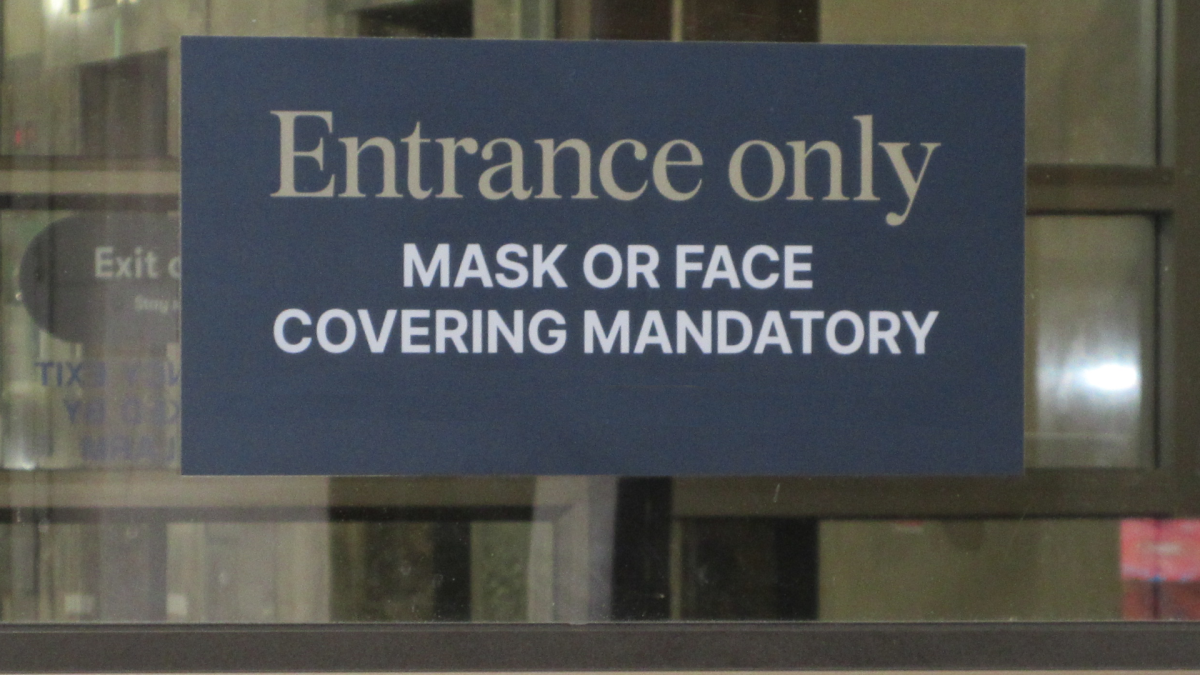With new modelling from Ontario’s Science Advisory Table suggesting the Omicron wave has plateaued in the province, some medical experts say there are signs society may be headed for a stage where we live with a form of COVID-19 on a regular basis.

Some infectuous disease specialists have speculated the Omicron variant could shift COVID-19 from “pandemic” to “endemic,” meaning the circulating virus no longer has the steep waves of outbreaks that hammer hospital capacity and force society to adapt.
Thomas Tenkate, a professor with Ryerson University who specializes in health and safety, says he interprets messaging last week from Premier Doug Ford and the province’s chief medical officer as saying “we’re not ever going to get rid of COVID.”
“So we have to work out how do we manage that in a way that ensures the health care system isn’t overwhelmed,” Tenkate told 900 CHML’s Hamilton Today.
“Those measures are very similar to the measures that we’ve been using already.”
He says the acceptance of being in an endemic stage revolves around a “thought process and control options” similarly used for seasonal flu and other respiratory viruses.
“I suppose they’re using that term, ‘learn to live with it,’ because it’s sort of saying it’s not going to go away,” said Tenkate.
Niagara Region’s acting medical officer says although the vaccines are protecting Ontarians and some of the world, there are no indications that population immunity from COVID will be achieved.
“Even if we do get that endemic state, immunity is going to wane over time and we’re going to lose that equilibrium,” Dr. Mustafa Hirji said.
“Once again, the virus will be able to spread and we’ll probably see additional surges of the virus in more infections.”
Hirji suggests COVID could become like influenza which is an endemic infection, but has surged at times in the winter months over the years.
“The timing maybe shifts a little bit, but pretty much every winter we get a surge of influenza infections and that’s the pattern of endemic disease,” said Hirji.
The director of the Ontario Science Advisory Table says its hard to triangulate how many COVID-19 cases there have been in Ontario since December due to the changing of PCR test criteria.
Based on averaging of wastewater data the province has receiving from municipal pilot projects, he suggest it’s somewhere between 1.5 and four million as of Tuesday.
He says a good scenario would be three million infections which, combined with current vaccination rates, would likely bring smaller waves or pulses of COVID in the future and bring society closer to endemicity.
“We need to take it slow and transition ourselves into a new mode,” Dr. Peter Juni told 900 CHML’s Bill Kelly Show.
- Shoppers faces proposed class action over claims company is ‘abusive’ to pharmacists
- ‘Bacterial vampirism’: Deadly pathogens attracted to human blood, study finds
- Most Canadian youth visit dentists, but lack of insurance a barrier
- Landmark smoking ban that would phase out sales passes U.K. parliament
“In the future, things can look considerably better, but we’ll need to figure out how this all plays out and how this will go with the new variants.”
In mid-January, infectious disease specialist Dr. Gerald Evans told Global News Omicron has ideal characteristics for ushering in an era of living with COVID-19.
“It is highly transmissible and less virulent. That’s the perfect mix,” said Evans.
He says because of unchallenged transmissibility, it can “outcompete the other viruses,” like the more deadly Delta strain, pushing it further and further out of the picture.
“For any virus to become endemic, it cannot be killing off the population of hosts that it infects,” Evans said.
240 people in Hamilton hospitals with COVID, 38 in intensive care
On Tuesday, Hamilton’s two hospitals reported a day-over-day decline in hospitalizations moving to 240 total COVID patients than the 260 recorded on Monday.
Overall, 38 people with COVID-19 remain in the city’s intensive care units (ICUs) as of Feb. 1, a common number seen since New Year’s Day with the networks averaging 34.8 ICU occupants every day.
HHS facilities have the most ongoing cases, 165 hospitalizations and 22 in ICUs.
Adult ICU occupancy at HHS is up slightly day over day to 97 per cent from the 84 reported Monday. St. Joe’s is reporting an ICU occupancy rate of 104 per cent.
Ontario is reporting 3,091 people in hospital with COVID on Monday, with 568 in intensive care units.
Both Hamilton networks continue to see a drop in the number of staffers isolating for COVID; both HHS and St. Joe’s have about 306 in the protocol. Last Monday, the hospitals reported a combined 609 isolating.
Outbreaks also appear to be subsiding with just eight ongoing surges tied to 39 combined cases, 37 of which involve patients.
Last Monday, both HHS and St. Joe’s had 14 outbreaks tied to a combined 151 patients.
Hamilton reporting 54 confirmed institutional COVID outbreaks
The number of confirmed institutional COVID-19 outbreaks in Hamilton dropped slightly day over day to 54 from the 57 reported Jan. 31.
Just under 1,300 total cases are connected with the surges which includes 844 a part of 25 outbreaks in homes containing seniors.
About 700 cases are at 18 long-term care homes (LTCH) and 119 in 7 retirement homes.
Just under half of the cases in the homes are with health-care workers, with about 323 in LTCHs.
The city’s largest outbreak is at the Heritage Green Nursing home, which has 110 cases as of Jan. 31 with 61 tied to residents.
Public health adds 2 more deaths to pandemic total
Hamilton public health added two more COVID-related deaths to move the city’s two-year pandemic total to 486 on Tuesday.
City data says the individuals were a person over 80 and one aged between 50 and 59.
The city has been recording an average of about two deaths per day since Jan. 1.
Nine of the last 15 deaths have been among people over the age of 80.
So far the city has posted 60 COVID-related deaths to its online dashboard since the start of January.
Over 82% of eligible Hamiltonians fully vaccinated
As of Jan. 31, the city has put about 1.18 million COVID vaccine doses into arms with about 460,000 second doses and 270,000 third shots.
Close to 82 per cent of eligible Hamiltonians aged five and up have had a pair of doses, while 86.7 per cent have gotten at least one shot.
About 87.2 per cent of residents aged 12-plus have had at least two shots, while about 89.9 per cent have had a first dose.
The city is still behind the provincial average, which has 89.2 per cent of those 12-plus with two doses and 91.9 per cent with a single dose.
Excluding kids aged five to 11, Hamiltonians in the 12-to-24 age group represent the lowest vaccination rates of those eligible in all communities.
Just over 81 per cent have had two shots.
Hamilton is also slightly behind the provincial average in first doses for those aged 5 to 11 — 49 per cent compared to Ontario’s 53.7 per cent.
The city is on par with second doses in the age group at 18 per cent.
— with files from Global News’ Eric Stober and Rachel Gilmore











Comments